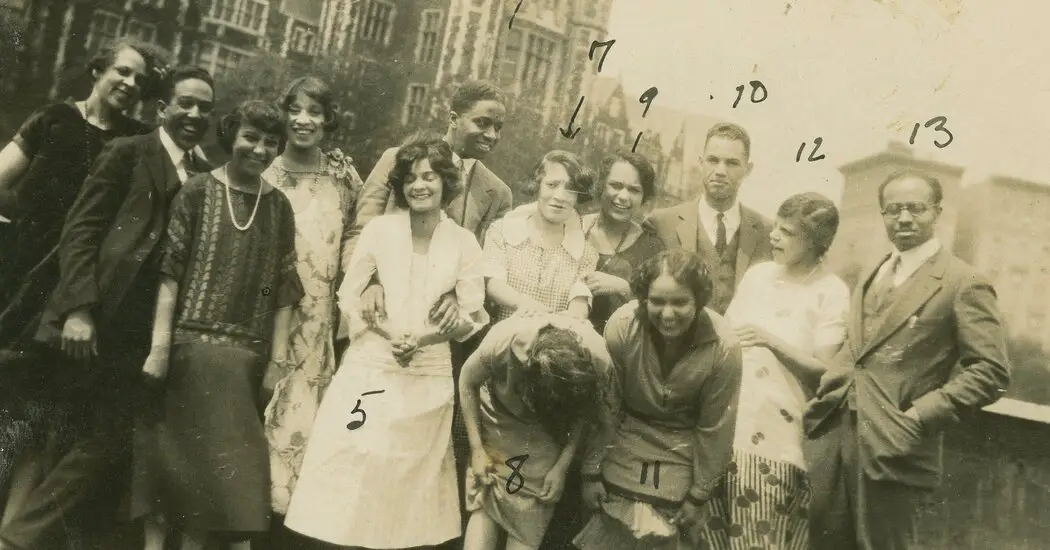The After-Party
If the Civic Club dinner was the seed of the movement, the Opportunity dinner was where its growth gained momentum. Hughes, then in his early 20s, had returned from Paris and won first prize for what would be considered his signature poem, “The Weary Blues.” Hurston had come to Harlem and won second prize for her play “Color Struck.”
Finally, the Renaissance had the attention of the mainstream news media. The New York Herald Tribune wrote in May 1925 that the Opportunity dinner was “A novel sight, that dinner — white critics, whom ‘everybody’ knows, Negro writers, whom ‘nobody’ knew — meeting on common ground.”
It was, as The Herald Tribune observed, a moment when “the American Negro is finding his artistic voice and that we are on the edge, if not already in the midst of, what might not be improperly called a Negro Renaissance.”
Veronica Chambers is the editor of Projects and Collaborations at The Times. Michelle May-Curry, Ph.D., is a Washington-based curator and writer and lecturer of engaged and public humanities at Georgetown University.
Susan C. Beachy and Sejla Rizvic contributed reporting.
Opening images credits: Barbecue painting by Archibald J. Motley Jr.: Chicago History Museum/Estate of Archibald John Motley Jr. via Bridgeman Images. Arturo Schomburg, Gwendolyn Bennett, Regina Anderson, the office of The Crisis magazine: Schomburg Center for Research in Black Culture, Photographs and Prints Division, The New York Public Library. Eugene O’Neill: General Photographic Agency/Getty Images. James Weldon Johnson: FPG/Getty Images. Eva D. Bowles: photographer unknown. W.E.B. Du Bois: Underwood Archives/Getty Images. Mary White Ovington, Jessie Fauset: Library of Congress/Corbis/VCG via Getty Images. Carl Van Doren: Doris Ulman. Charles S. Johnson: U.S. Farm Security Administration/Office of War Information Collection, Prints and Photographs Division, Library of Congress. Countee Cullen: Carl Van Vechten via Beinecke Rare Book and Manuscript Library and the Van Vechten Trust. “Quicksand” by Nella Larsen, “The New Negro” by Alain LeRoy Locke, “The Weary Blues” by Langston Hughes, “Their Eyes Were Watching God” by Zora Neal Hurston: Collection of the Smithsonian National Museum of African American History and Culture. “Black No More” by George S. Schuyler, Survey Graphic “Harlem Mecca of the New Negro,” “Home to Harlem” by Claude McKay, “There is Confusion” by Jessie Fauset, Fire!! A Quarterly Devoted to Younger Negro Artists, “The Autobiography of an Ex-Coloured Man” by James Weldon Johnson: Beinecke Rare Book and Manuscript Library/James Weldon Johnson Memorial Collection. “Color” by Countee Cullen: Harper and Brothers. “Cane” by Jean Toomer: Boni & Liveright. Duke Ellington Orchestra: “Black and Tan” film by Dudley Murphy via CriticalPast. Dancers performing at the Cotton Club circa 1930: via CriticalPast.

